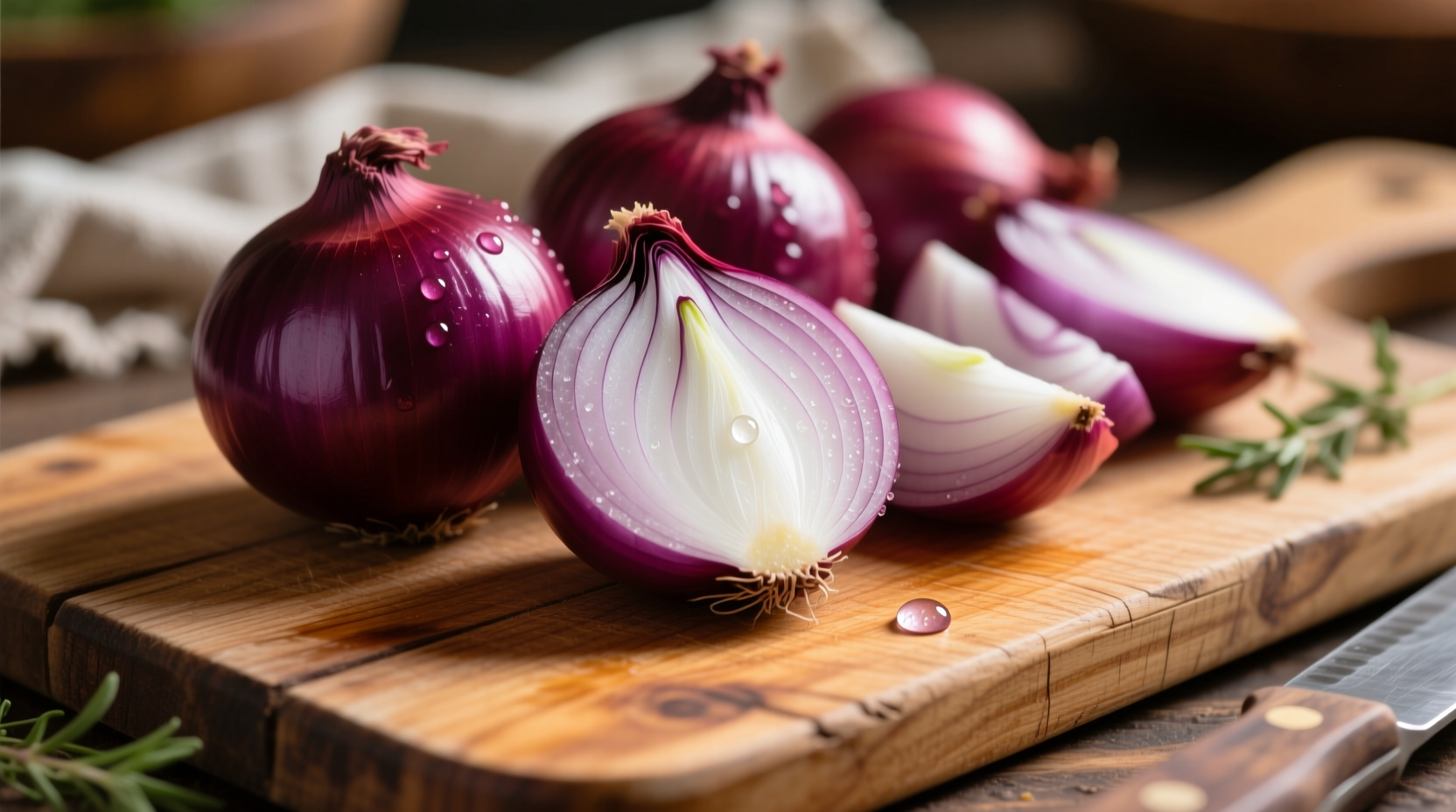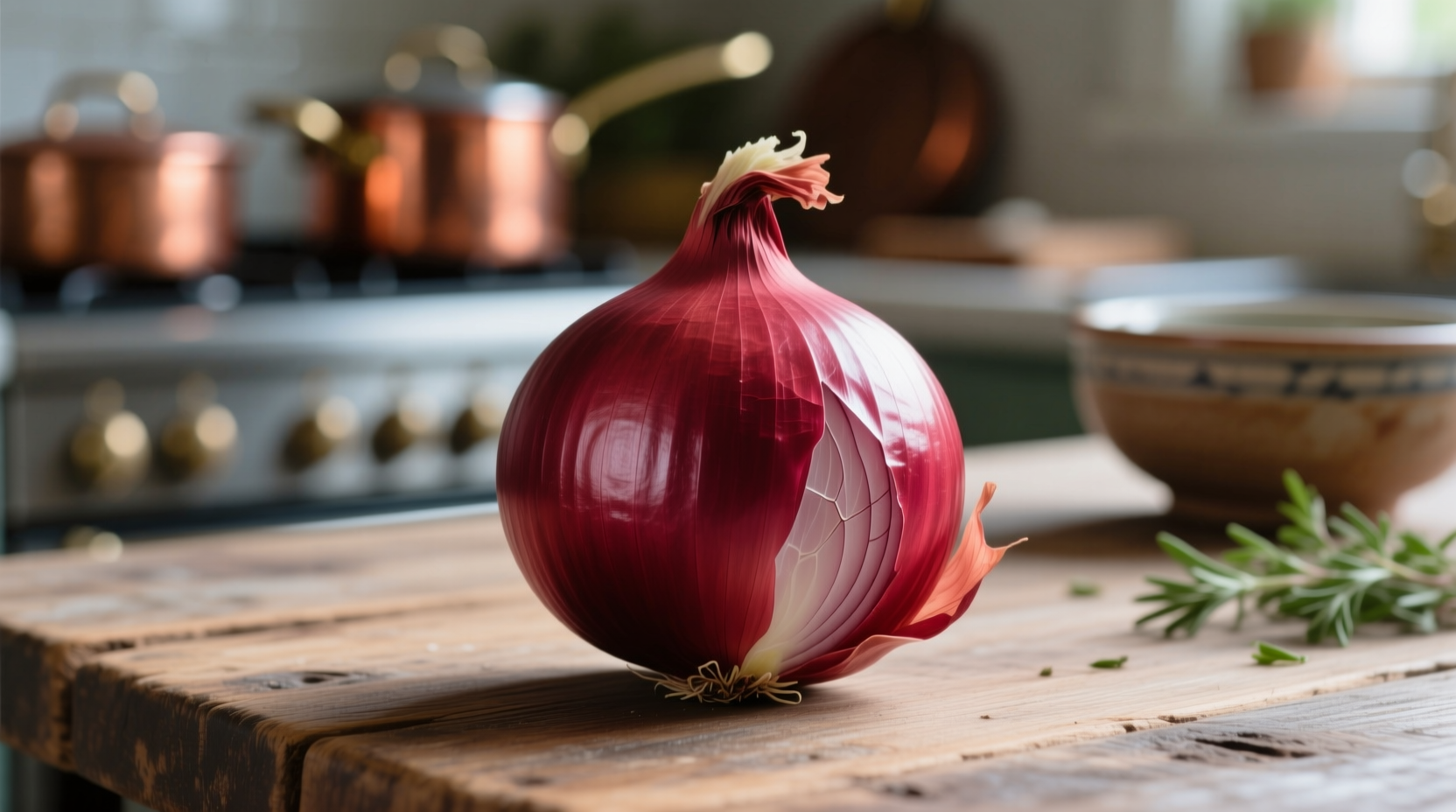Red onions offer a vibrant color and milder flavor compared to other onion varieties, making them perfect for both raw applications and cooking. This comprehensive guide reveals exactly how to select, store, prepare, and maximize the culinary potential of red onions while preserving their distinctive color and flavor profile.
When you reach for red onions at the grocery store, you're selecting one of the most versatile alliums in the culinary world. Unlike their sharper white and yellow counterparts, red onions provide a beautiful purple hue and a more delicate sweetness that transforms dishes both visually and flavorfully. Understanding their unique properties can elevate your cooking from ordinary to extraordinary.
What Makes Red Onions Different
Red onions (Allium cepa) get their distinctive purple-red skin and flesh from anthocyanins, the same antioxidants found in blueberries and red cabbage. This isn't just about appearance—their chemical composition creates a flavor profile that's notably milder than yellow onions but more complex than white varieties. The outer layers contain the highest concentration of these pigments, which explains why slicing through a red onion reveals concentric rings of varying intensity.
| Onion Variety | Flavor Profile | Best Culinary Uses | Storage Duration |
|---|---|---|---|
| Red Onion | Mild, slightly sweet with subtle sharpness | Raw applications, salsas, salads, pickling | 2-3 weeks at room temperature |
| Yellow Onion | Strong, pungent when raw; sweetens when cooked | Cooking, caramelizing, soups, stews | 1-2 months in cool, dark place |
| White Onion | Sharp, clean flavor with higher water content | Mexican cuisine, guacamole, raw applications | 2-3 weeks refrigerated |
| Shallot | Delicate, subtle garlic notes | Vinaigrettes, sauces, fine cooking | 1 month at room temperature |
This comparison shows why red onions excel in applications where you want onion flavor without overwhelming sharpness. Their balanced profile makes them the preferred choice for many raw preparations across global cuisines, from Mediterranean salads to Latin American pico de gallo.
Selecting the Perfect Red Onions
When choosing red onions, look for firm bulbs with dry, papery skins that show no signs of moisture or soft spots. The best specimens feel heavy for their size, indicating high water content and freshness. Avoid onions with green sprouts emerging from the top, as this indicates age and potential bitterness.
Seasonality matters—red onions typically reach peak quality from late summer through fall, though modern storage techniques make them available year-round. During their natural harvest season, you'll find the sweetest, most flavorful specimens with the deepest coloration.

Proper Storage Techniques
Unlike many vegetables, red onions prefer cool, dark, and dry environments rather than refrigeration. Store them in a mesh bag or basket in a pantry or cupboard with good air circulation. The ideal storage temperature ranges between 45-55°F (7-13°C) with moderate humidity.
Refrigeration can extend their life but changes their texture, making them better suited for cooked applications rather than raw use. If you've cut a red onion, store the unused portion in an airtight container in the refrigerator for up to 7 days.
Never store red onions near potatoes, as potatoes release moisture and gases that accelerate onion spoilage. This simple separation can double your onions' shelf life.
Culinary Applications and Flavor Transformation
Red onions shine in raw applications where their color and mild flavor enhance dishes without overwhelming other ingredients. They're essential in:
- Mexican pico de gallo and fresh salsas
- Mediterranean fattoush and Greek salads
- Pickled preparations for burgers and tacos
- Raw applications in sandwiches and burgers
- Garnishes for soups and stews
When cooking red onions, their flavor profile transforms significantly. The anthocyanins that give them their color are pH-sensitive—when exposed to acidic ingredients like vinegar or citrus, they maintain their vibrant purple hue. In alkaline environments (like when cooked with baking soda), they can turn an unappetizing blue-green.
For cooking applications, red onions develop a subtle sweetness when sautéed or grilled, though they don't caramelize as deeply as yellow onions. They work beautifully in:
- Quick-pickled red onions for tacos and sandwiches
- Grilled vegetable medleys
- Roasted with other root vegetables
- Sautéed in fajitas and stir-fries
- Raw in ceviche and other citrus-marinated dishes
Managing Red Onion Sharpness
If you find raw red onions too pungent, several techniques can mellow their flavor while preserving texture:
- Ice water bath: Soak sliced onions in ice water for 15-30 minutes to reduce sharpness while maintaining crunch
- Vinegar soak: Briefly marinate in vinegar-based solution (3 parts vinegar to 1 part water) for 10-15 minutes
- Salt treatment: Sprinkle with salt, let sit for 10 minutes, then rinse to draw out excess moisture and sharp compounds
- Quick pickle: Create a 5-minute pickle with equal parts vinegar and water plus sugar to sweeten and mellow
These techniques work because they neutralize the sulfur compounds responsible for onion's characteristic bite, making them more palatable for sensitive palates while preserving their distinctive color.
Nutritional Benefits Backed by Science
According to USDA FoodData Central, one medium red onion (110g) provides:
- 44 calories
- 10g carbohydrates
- 2g dietary fiber (8% of daily value)
- 11mg vitamin C (12% of daily value)
- Significant amounts of quercetin and anthocyanins
Research published in the Journal of Agricultural and Food Chemistry confirms that red onions contain up to 25 times more anthocyanins than yellow onions, making them particularly valuable for their antioxidant properties. These compounds have been associated with reduced inflammation and improved cardiovascular health in multiple studies.
Common Red Onion Questions Answered
Understanding these frequently asked questions helps maximize your red onion experience:
- Why do red onions sometimes turn blue when cooked? This color change occurs when the anthocyanins react with alkaline substances. Adding a touch of acid like lemon juice prevents this.
- Can I substitute red onions for yellow onions in recipes? Yes, but expect a milder flavor and potential color transfer in cooked dishes.
- Why do my eyes water less with red onions? Red onions contain lower concentrations of the lachrymatory factor that causes tearing.
- How can I prevent red onions from bleeding color into other ingredients? Briefly rinse sliced onions in cold water or use acid-based dressings to stabilize the pigments.











 浙公网安备
33010002000092号
浙公网安备
33010002000092号 浙B2-20120091-4
浙B2-20120091-4